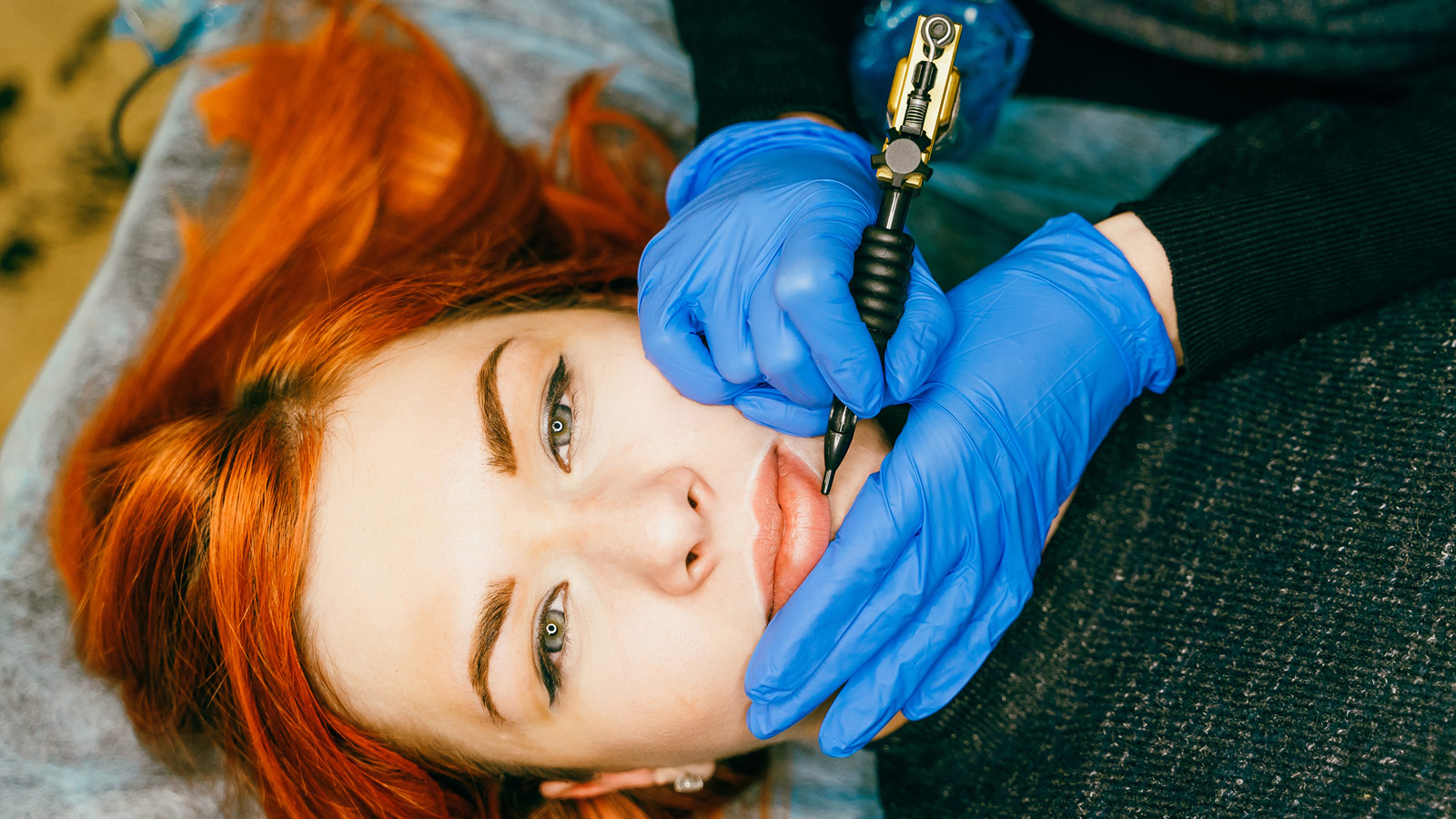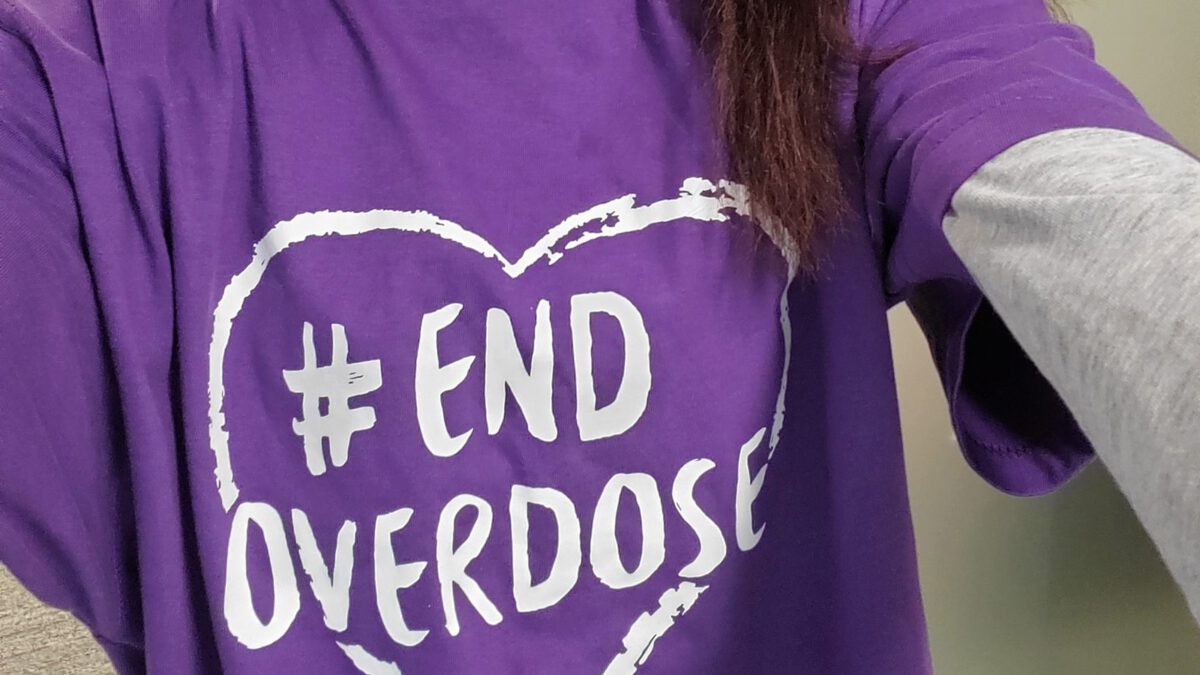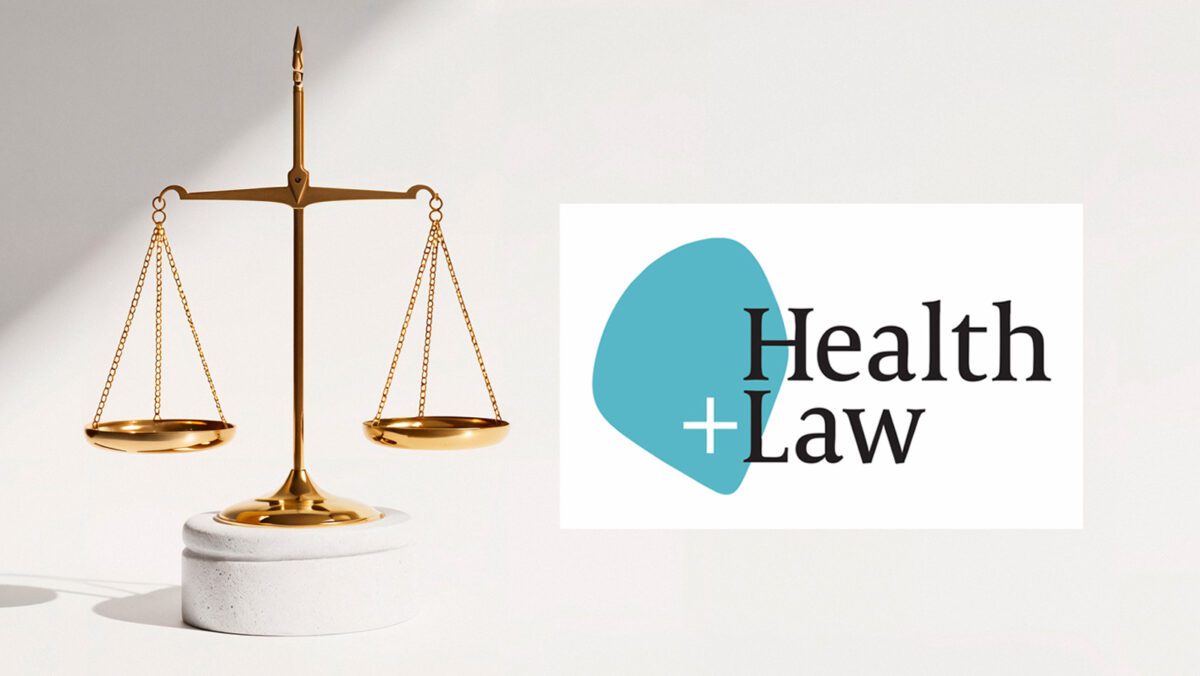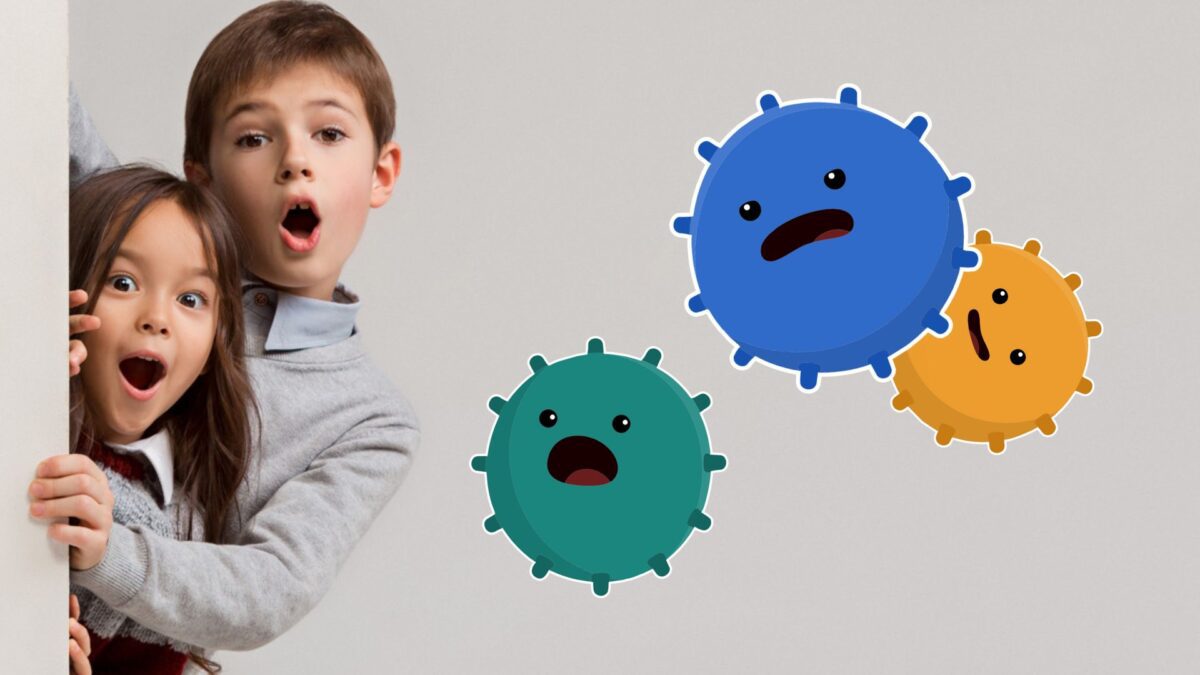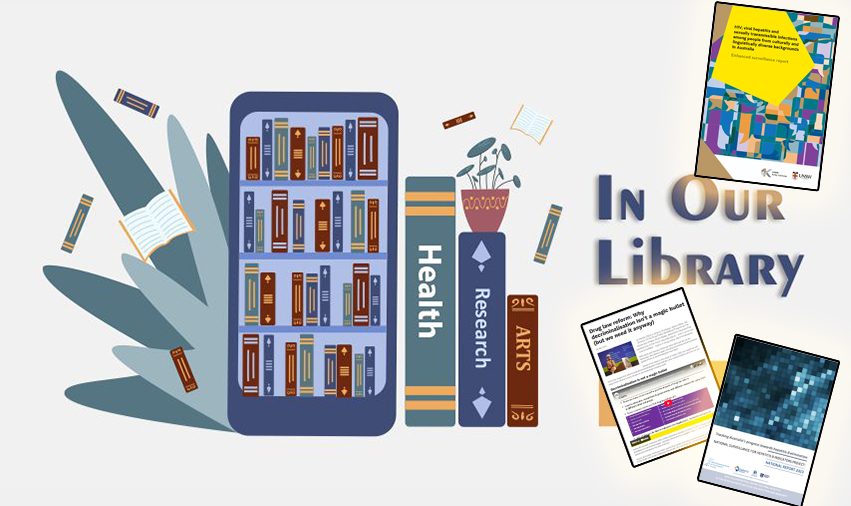The permanent make up (PMU) industry in Australia is largely unregulated and while sad stories of botched eyebrows and misshapen lips gain media attention every now and then, less has been said about the other risk of unregulated minor cosmetic surgery: infection.
The risk of infection from contaminated equipment, unhygienic settings and carelessness is real, especially infection from blood-borne viruses (BBV) such as viral hepatitis. This was recently highlighted in a NSW Health call to customers of a Sydney-based cosmetic clinic to get tested for BBVs.
Adelaide PMU artist, Sara Mac, believes passionately that this aspect of the industry can be changed and is working hard to achieve it from the inside. Sara runs a salon – OHMYBROW (OMB) – that provides cosmetic tattooing services, as well as an academy that trains make-up artists. She has recently joined the Board of the South Australian Hair & Beauty Association (SAHBA) and believes that in the absence of government regulation and licensing, education and self-regulation by the industry itself becomes all the more important.
OMB Academy offers a full, free-to-access course on blood-borne pathogens, and health and safety practices in permanent makeup. A quick check of PMU training organisations in South Australia revealed another three organisations which list health and safety content as part of their course units but none responded to our request for more information.
“As a SAHBA Board member, I believe one of our key goals is to formally collaborate with industry members and promote a unified approach to safety standards,” Sara told HepSA Community News.
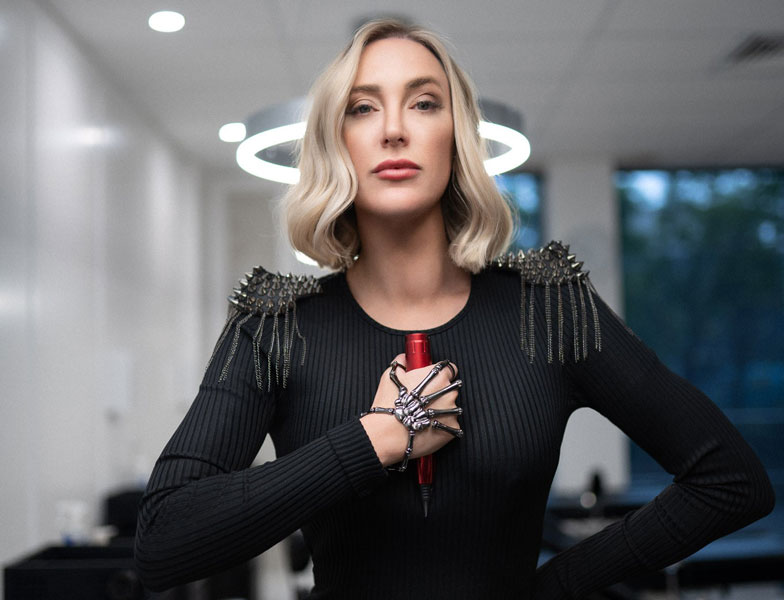
She said while it’s great to see other training programs beginning to address health and safety, the Association is unable to ensure the quality of those trainings. She said establishing a standardised document, such that available in the industry in the United States, is crucial for the Australian industry.
“SAHBA is currently working on initiatives to support industry self-regulation through consistent safety practices and accessible resources like our Bloodborne Pathogen course, which we hope will serve as a benchmark,” she said.
Why
Sara’s passion for elevating health and blood safety standards in the cosmetic tattoo industry stems from a series of troubling experiences and observations she encountered in her early days in the industry, both as a client and a trainer.
I was lying on a fold-out massage table in the dining room of a family home … pets interacting with me. The lady treating me sat on a faux fur stool, and I never saw her wash her hands between clients.
“When I had my eyebrows tattooed, it was a traumatising experience,” she recalled. ”What really scared me was the huge gap in professional conduct and health standard. There were numerous red flags. There was no consultation, no service forms, and no treatment guidance.
“I was lying on a fold-out massage table in the dining room of a family home, with the sound of children screaming and pets interacting with me. The lady treating me sat on a faux fur stool, and I never saw her wash her hands between clients. Asking questions felt like an inconvenience to her, and the entire service lasted a mere 20 minutes. For a $700 treatment that involved skin breakage, the level of unprofessionalism was shocking.
“My second experience was no better, raising even more red flags and making me wonder why society, including the long line of women waiting their turn, were okay with such low operational standards.
“When I decided to start my career as a permanent makeup artist, I was appalled by the lack of regulation and the difficulty in finding clear legal compliance or service guidelines. There were no mandatory qualifications, no infection control requirements, and no need to notify the council. The training I eventually found was only two days long, leaving me more confused than ever. This was when I realised the issue at hand was much more prevalent.”
Sara set out on a journey to develop her own training program while learning the craft herself.
I’ve seen students drop items on the floor and continue using them, touch other students’ contaminated trolleys, and neglect the essential protective coverings for reusable items. It was incredibly challenging…
“My goal was to create materials that answered all the questions I had during my quest for competency. There were significant gaps to fill, particularly in clinical etiquette.”
Her determination to advocate for higher industry standards, especially in health and blood safety, was solidified when I began teaching at her academy. Despite including Blood Borne Pathogens and Infection Control training in her workshops, she still witnessed alarming behaviour.
“One student, ready to treat her first real model, had set up her station with a microblading tool she had used on pig skin during practice. She didn’t see an issue with this until I explained the risks, after which she replaced the tool but didn’t think to change the entire station,” Sara recalled.
“In addition, I’ve seen students drop items on the floor and continue using them, touch other students’ contaminated trolleys, and neglect the essential protective coverings for reusable items. It was incredibly challenging to instil even the most basic hygiene practices into the artists. If they did this in front of me, a trainer, imagine what they might do behind closed doors.”




Lead by Example
To other PMU artists looking to enhance health and safety in their businesses, Sara’s tips are:
Educate Yourself Thoroughly: Ensure you have a solid understanding of bloodborne pathogens, infection control, and proper sanitation practices. Continuous education is key; make sure you and your staff complete BBP training annually. Stay connected to local organisations and associations to keep updated with the latest standards and guidelines.
Create and Follow Strict Protocols: Develop comprehensive health and safety protocols for your studio. This includes proper sterilisation of tools, use of disposable materials when possible, and strict hand hygiene. Ensure these protocols are non-negotiable and consistently followed. Additionally, develop an exposure control plan and educate yourself and workers on their obligations around protecting themselves and others.
Set Up a Clinical Environment: PMU procedures require a clean, professional setting. A home environment isn’t suitable. Your workspace should emulate a clinical space to instil trust and comfort in your clients. Regularly disinfect all surfaces and create a layout that minimises cross-contamination.
Lead by Example: The lack of regulation does not absolve us from the responsibility of setting and upholding high standards. It is imperative to model the behaviour you expect from others and to be the catalyst for positive change in the industry. Always adhere to and demonstrate best practices in hygiene and safety, even if no one is watching
Have a go
The OMB Academy’s Blood Borne Pathogen and Infection Control training is free to access. Anyone interested can enrol https://www.ohmybrow.shop/bloodborne-pathogens. A name and email are required for registration, confirmation of course completion and issue of certificate.
Last updated 18 February 2025
More from:
Enjoyed this article? Subscribe to be notified whenever we publish new stories.
Subscribe for Updates
